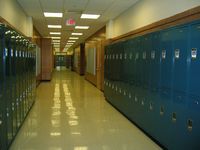Shortage of primary school teachers

According to a study conducted by the Bertelsmann Stiftung, there will be deficit of around 35,000 teachers in primary schools by 2025. It is important that well-considered, short-term measures are enacted now in order to address this shortfall.
Approximately 105,000 new primary teachers must be employed by 2025; of these 60,000 are required to replace teachers leaving the profession and a further 26,000 will be needed to cover increasing pupil numbers. However, only 70,000 teachers will actually be trained during this period. The situation is therefore unlikely to ease before 2026.
‘Good schools mean good teaching and that can only be provided by good teachers. In view of the current nationwide lack of teachers, federal states should no longer attempt to poach each other’s teaching staff. Those in charge should try to seek mutual solutions to cover shortages – without allowing quality to suffer’ says Jörg Dräger, from the executive board of the Bertelsmann Stiftung.
There are currently only enough student teachers training at universities to cover the number of teachers retiring or leaving the profession due to illness. A short-term increase in study places will not, however, alleviate the situation, as it generally takes 7 years to train to be a teacher.
The additional personnel will be needed particularly for the period from 2021 to 2025.
It is therefore important that swift and flexible solutions are found. On one hand experienced teachers, such as retirees or those working part-time, could continue working for longer or teach more hours. The Bertelsmann Stiftung recommends introducing incentives for retiring teachers to delay their retirement or to continue to work on a temporary basis. Equally, teachers should be encouraged to work full-time rather than part-time.
A further possibility, which is already being implemented, is the recruitment of ‘lateral entrants’. This involves recruiting skilled people from other professions who did not originally train as teachers. The use of such personnel requires specialist selection processes, qualifications and supervision due to the particular pedagogic challenges they face.
Editorial staff (alb, cb)
Sources
Image source: image from elizabethaferry / CC0
Information source: bertelsmann-stiftung.de 31.01.2018